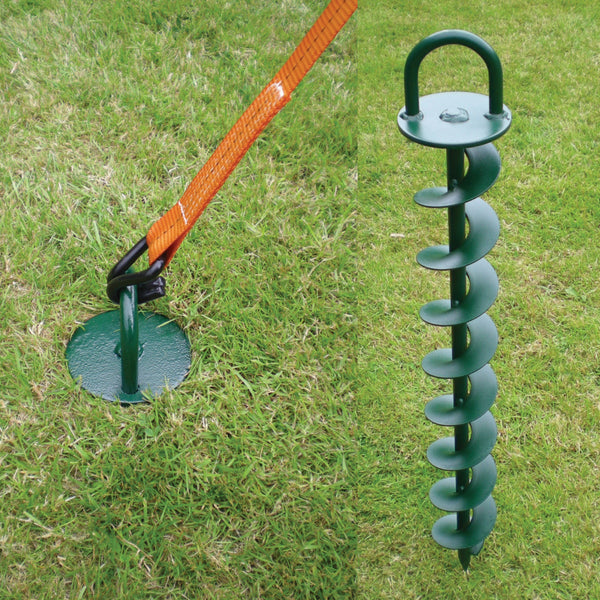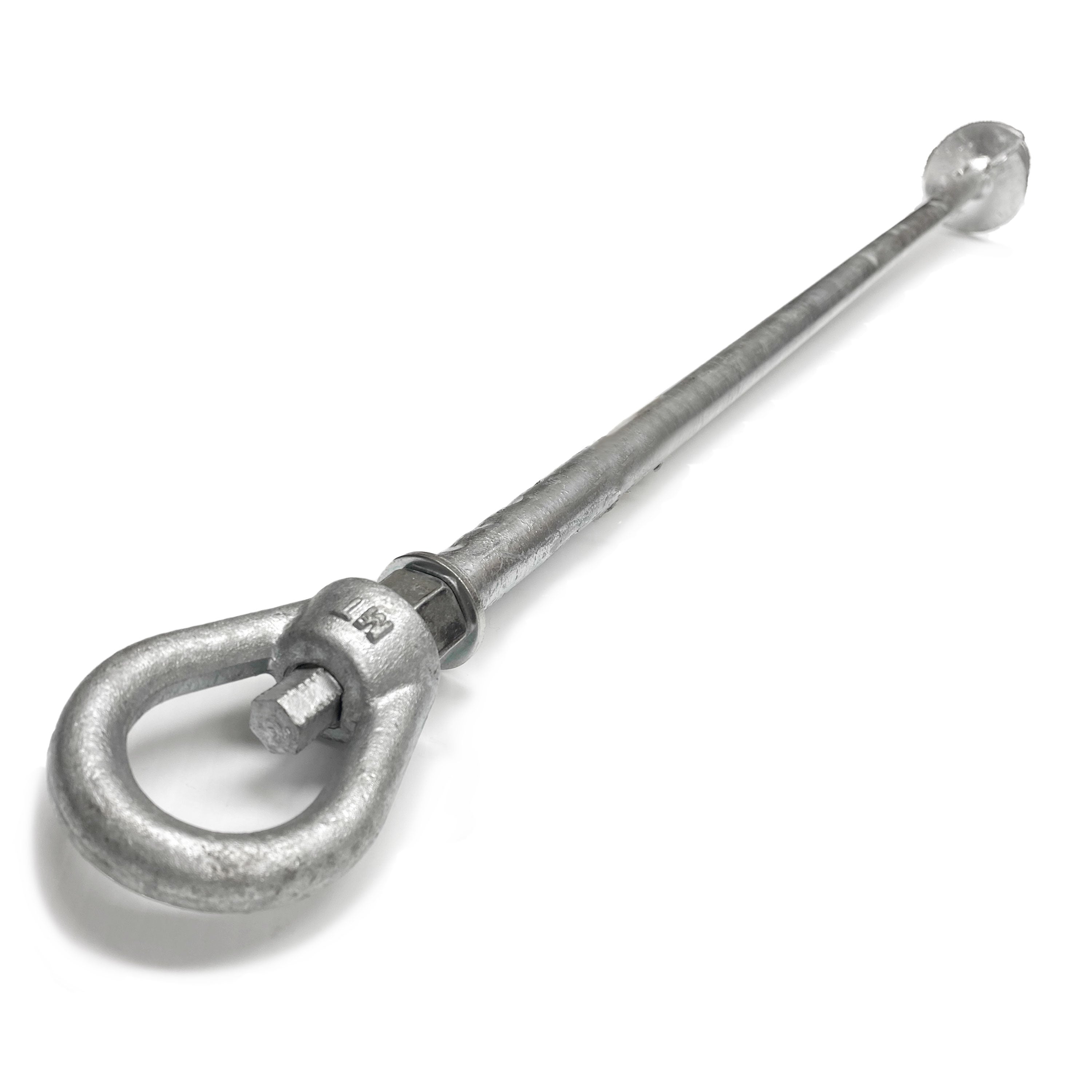How a Ground Anchor Can Boost Protection for Your Structures
How a Ground Anchor Can Boost Protection for Your Structures
Blog Article
Explore the Different Sorts Of Ground Anchor for Your Next Job
When starting a building or landscape design task, understanding the numerous sorts of ground anchors offered is important to making sure both security and longevity (Ground Anchor). From auger anchors, which master diverse soil problems, to stake anchors developed for temporary installments, the alternatives are various. Additionally, concrete and screw supports existing unique advantages in certain scenarios, while deadman supports are customized for applications requiring resistance to lateral forces. The selection of an appropriate support kind can significantly affect the total success of your project, prompting additional exploration right into their particular benefits and applications.

Auger Anchors
Auger supports are a preferred choice in different building and landscaping jobs as a result of their unique design and effective anchoring capabilities. These anchors are composed of a helical screw-like shaft that is driven into the ground, permitting a stable and safe and secure hold. The spiral layout helps with easy setup and maximizes resistance versus lateral forces, making auger anchors specifically effective in applications such as secure fencing, short-term frameworks, and erosion control.
The installment process of auger anchors is reasonably uncomplicated. They can be by hand or mechanically set up, depending upon the dimension and needed deepness. This adaptability permits their usage in diverse dirt conditions, from sandy to clayey surfaces. Additionally, auger anchors can be quickly removed and recycled, which includes in their cost-effectiveness and sustainability.
One of the significant advantages of auger anchors is their capacity to disperse tons uniformly throughout the bordering soil, reducing the risk of dirt disruption and minimizing ecological effect. Additionally, they are less at risk to loosening up or heaving with time compared to traditional anchoring techniques. Auger anchors are a superb choice for projects requiring durable and reliable anchoring remedies.

Stake Anchors
When it concerns securing structures in a variety of outdoor applications, risk supports supply a reliable and straightforward solution. These supports are normally constructed from durable materials such as steel or light weight aluminum, designed to endure environmental anxieties while providing optimal stability. Their easy layout permits quick installment, making them a suitable selection for short-lived or long-term anchoring demands.
Stake anchors are specifically useful in securing outdoors tents, covers, and various other lightweight structures against wind and weather condition. They function by being driven into the ground at an angle, producing a strong hold that resists pull-out forces - Ground Anchor. The efficiency of stake supports depends on several elements, consisting of dirt type, dampness material, and the angle of setup
For included security, lots of risk supports feature add-on points for bands or ropes, permitting tension modifications as necessary. In applications such as landscaping or construction, they can efficiently stabilize devices or structures on unequal terrain. Generally, risk anchors offer a economical and versatile option for safeguarding various outside installations, making them a preferred selection for contractors and do it yourself lovers alike.
Concrete Anchors
Concrete anchors offer a robust remedy for protecting structures to concrete surfaces, ensuring stability and safety and security in various applications. These anchors are important for jobs ranging from property constructions to large commercial installations. They are available in different types, including growth anchors, adhesive supports, and undercut supports, each developed for specific lots needs and ecological problems.
When mounted,Expansion supports count on mechanical mechanisms to hold the concrete. They are excellent for tool to sturdy applications. Glue anchors use high-strength epoxy or resin to bond the anchor to the concrete, using superior load-bearing capabilities, especially in fractured concrete circumstances. Undercut anchors develop an one-of-a-kind form within the concrete, offering exceptional holding power, particularly in applications where tensile lots are widespread.
When carried out appropriately, concrete anchors considerably enhance the structural integrity of various projects, making them indispensable in modern-day building methods. Recognizing the details demands of your job will certainly aid in selecting the ideal type of concrete support for the task.
Screw Anchors

Screw anchors are a functional fastening option that can be efficiently employed in a variety of applications where conventional concrete image source supports may not be sufficient. These supports include a helical design that permits them to be easily driven right into the ground, making them optimal for use in soil and other substratums. Their unique framework gives superb holding power and resistance to pull-out forces, making them appropriate for numerous projects, from landscaping to structural assistance.
Among the primary advantages of screw supports is their ease of installation. They call for marginal devices and can often be mounted without the need for excavation, which conserves both time and labor costs. Additionally, screw supports can be removed and reused, providing a lasting option for short-term applications.
Screw anchors are especially advantageous in areas where soil conditions are challenging, such as sandy or loose soils. Their capability to be set up at differing depths enables customization based on certain task requirements. In general, screw anchors offer a reliable and reliable anchoring technique, making them an outstanding option for professionals and engineers seeking efficient options for their jobs.
Deadman Anchors
Deadman anchors serve as a durable remedy for maintaining frameworks in tough problems, especially where typical securing techniques might fail. These supports include huge, hefty things buried underground, which produce resistance against lateral pressures. The layout normally entails a horizontal component, such as a block of concrete or a metal plate, hidden in the soil, to which wires or bands are attached.
The efficiency of deadman supports depends on their capability to disperse tons over a larger location, lowering the risk of failure in unpredictable soil problems. They are especially useful in applications such as retaining walls, short-lived structures, and incline stabilization, where soil motion can endanger the integrity of the structure.
Installment of deadman supports calls for mindful planning to guarantee they are positioned at the appropriate my link deepness and alignment, maximizing their load-bearing capability. While they may require even more labor and product than light-weight supports, their dependability in adverse problems makes them indispensable for long-term tasks. Additionally, deadman anchors are flexible and can be adjusted to various applications, making them a best choice for designers encountering special obstacles in their jobs.
Conclusion
In summary, picking the appropriate kind of ground anchor is crucial for making certain security and security in various jobs. Auger supports stand out in diverse dirt conditions, while stake supports match temporary applications. For concrete surface areas, growth and adhesive anchors provide dependable options, and screw supports provide flexibility in tough surfaces. Deadman anchors are particularly efficient in withstanding side pressures for keeping wall surfaces. Mindful factor to consider of these options will enhance project results and architectural stability.
Furthermore, concrete and screw anchors present one-of-a-kind advantages in particular scenarios, while deadman supports are customized for Read More Here applications needing resistance to lateral forces - Ground Anchor.Auger supports are a popular choice in different building and construction and landscaping tasks due to their distinct style and efficient securing capabilities. They come in different kinds, consisting of expansion supports, glue anchors, and undercut supports, each made for particular lots needs and environmental problems
Glue anchors make use of high-strength epoxy or resin to bond the anchor to the concrete, supplying exceptional load-bearing capabilities, especially in fractured concrete scenarios. Overall, screw supports offer a trustworthy and efficient anchoring approach, making them an exceptional choice for engineers and professionals seeking effective remedies for their tasks.
Report this page